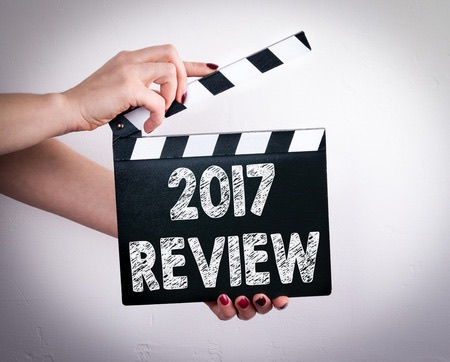 It is one again time to take a moment to look back on the year that was, reflecting on the biggest, most impactful moments of 2017. For us that means looking backward and assessing the key moments and events in the world of intellectual property.
It is one again time to take a moment to look back on the year that was, reflecting on the biggest, most impactful moments of 2017. For us that means looking backward and assessing the key moments and events in the world of intellectual property.
Each year I look back on my own writings and publish the top 10 patent stories, which this year featured a heavy dose of events surrounding Supreme Court decisions and various topics relating to the Patent Trial and Appeal Board.
Each year I also ask a panel of industry experts for their insights for our Biggest Moments in IP series. This year you will see several of our industry experts also mentioned key Supreme Court decisions from 2017, but unlike in previous years where there was near unanimity on the biggest moments, such as in 2014 when the Supreme Court decided Alice v. CLS Bank, there is a great deal of variety of thought, which is the very reason to survey the experts.
Steve Kunin focus primarily on the Supreme Court patent cases, which Bob Stoll also mentions but then goes on to discuss the lack of momentum for more patent reform and the nomination of a new Director for the USPTO as key moments. Paul Morinville also mentions the political on Capitol Hill, but focuses on Members of Congress not buying into the patent troll narrative like they once did. Erik Oliver focuses on a rebound in the patent market, Alden Abbott sees a pro-innovation, pro-patent Assistant Attorney General for Antitrust as a dramatic shift for the DOJ. Ben Natter, Jess Sblendorio and Alexander Callo focus on the Supreme Court’s decision in Matal v. Tam, which declared the prohibition against registering disparaging trademarks unconstitutional.
Without further ado, here is our panel of experts.
 Bob Stoll
Bob Stoll
Partner, Drinker Biddle
As I recount the IP events of 2017 I was struck by the significant changes the year brought. Several Supreme Court cases altered the patent landscape. Probably the most important was TC Heartland v. Kraft Food, which overturned decades of precedent about where infringement litigation could be filed. Also important was the decision by the en banc Federal Circuit In re Aqua Products where a divided court held that the petitioner in a PTAB case has the burden of showing that proposed amendments to the claims are unpatentable. Impression Products v. Lexmark also charted new ground overturning long established law by stating that patent owners can’t put restrictions on patented items after they are sold anywhere in the world. While these are probably the most notable cases, there were many more that affect the patent system.
The legislative arena was not as active. The STRONGER Patents Act was introduced by Sen. Coons from Delaware with other co-signers, but the Hill didn’t enact significant intellectual property legislation in 2017.
Probably the most important event to the IP community in 2017 was the inauguration of President Trump. This provides him with the opportunity to affect IP policy for decades. He has already appointed one Supreme Court justice and has moved to fill several district court and appellate court vacancies. He has also appointed Andrei Iancu to head the USPTO. This will permit implementation of rules to further administration policies relating to IP. And, when little is being accomplished in our divided legislature, this may be the best way to improve the IP system going forward.
Robert L. Stoll has more than 30 years of experience in intellectual property prosecution. Bob retired from the USPTO as Commissioner for Patents at the end of 2011 after a distinguished 34-year government career.
 Stephen Kunin
Stephen Kunin
Partner, Oblon, McClelland, Maier & Neustadt, L.L.P.
The Supreme Court issued three impactful decisions in May 2017 causing a “disturbance in the force” of long standing principles of patent law as Star Wars® fans would say. In SCA Hygiene Prods. AB v. First Quality Baby Prods., LLC the Court held that laches cannot be an equitable defense in a patent suit when the patent owner files suit for past damages within six years of the date of infringement. In Impression Prods. V. Lexmark Int’l, Inc. the Court created an international exhaustion of patent rights doctrine based upon a first sale of the patented invention anywhere in the world. This may lead to more attempts by patent owners to seek to license rather than sell products under Mas-Hamilton Group v. LaGard, but cases like Minton v. National Association of Securities Dealers, Inc. could temper such enthusiasm. Finally, a sea change in the law of patent venue occurred in TC Heartland, LLC v. Kraft Food Brands Group, LLC where the Court held that patent suits can only be brought where the accused infringer is incorporated or has a regular and established place of business. The Federal Circuit in In re Cray, Inc. sought to define what constitutes a regular and established place of business to provide greater clarity to the law.
Stephen Kunin serves as an expert witness and consultant on patent policy, practice and procedure. Mr. Kunin served three decades at the USPTO, including 10 years as Deputy Commissioner for Patent Examination Policy.
 Erik Oliver
Erik Oliver
Partner, Richardson Oliver Law Group
We think one of the important changes of 2017 has been the rebound in patent sales; our data shows sales up to $296M from $165M last year. Specifically, software sales rates are up 60% year over year. The industry has suffered from years of negative patent decisions, prices have declined, and sentiment has been somewhere between depressed and despondent. The data suggests that the market is turning around. More deals, more participants, and more transparency. We are firm believers that a robust, transparent secondary market benefits the patent system and companies (more information on the IPWatchdog, IAM volume 87 and Bloomberg).
Mr. Oliver counsels clients on a variety of patent and business matters, including licensing, buying, selling, valuation, prosecution and business processes. Prior to founding the ROL Group, Mr. Oliver was a Vice President at ThinkFire Services USA, Ltd’s Silicon Valley office.
 Alden Abbott
Alden Abbott
Heritage Foundation
On November 10, at the University of Southern California Law School, Assistant Attorney General for Antitrust Makan Delrahim delivered an extremely important policy address on the antitrust treatment of standard setting organizations (SSOs). Delrahim’s remarks outlined a dramatic shift in the Antitrust Division’s approach to controversies concerning the licensing of standard essential patents (SEPs, patents that “read on” SSO technical standards) that are often subject to “fair, reasonable, and non-discriminatory” (FRAND) licensing obligations imposed by SSOs. In particular, while Delrahim noted the theoretical concerns of possible “holdups” by SEP holders (when SEP holders threaten to delay licensing until their royalty demands are met), he cogently explained why the problem of “holdouts” by implementers of SEP technologies (when implementers threaten to under-invest in the implementation of a standard, or threaten not to take a license at all, until their royalty demands are met) is a far more serious antitrust concern.
More generally, Delrahim stressed the centrality of patents as property rights, and the need for enforcers not to interfere with the legitimate unilateral exploitation of those rights (whether through licensing, refusals to license, or the filing of injunctive actions). Underlying Delrahim’s commentary is the understanding that innovation is vitally important to the American economy, and the concern that antitrust enforcers’ efforts in recent years have threatened to undermine innovation by inappropriately interfering in free market licensing negotiations between patentees and licensees.
Delrahim’s outstanding speech heralds a possible move back toward sound patent-antitrust policy, which is key to an innovative American economy. Let us hope that the Antitrust Division (hopefully in tandem with the Federal Trade Commission) takes further decisive action in 2018 to build on the foundation laid by the speech in 2018.
Given the many significant patent-related developments in 2017, it would be easy for a short antitrust policy speech delivered in November 2017 to get lost in the shuffle. That speech, however, holds out the prospect for a much-needed Trump Administration reversal of unsound Obama Administration patent-antitrust policy in 2018.
Alden Abbott serves as Deputy Director of Edwin Meese III Center for Legal and Judicial Studies at The Heritage Foundation.
 Paul Morinville
Paul Morinville
Managing Director, US Inventor
The most significant thing to happen in 2017 is the final transformation of Congress from believers in fictional patent trolls, created by huge tech multinationals and perpetuated by the likes of Congressman Darrell Issa, into educated congressional Members who now see it for what it is, the destruction of American ingenuity, economic growth, job creation and national security.
This was made glaringly obvious as Darrell Issa, who barely squeaked by in the last election and probably won’t win this cycle, continued his vain quest to wipe out small inventors in several one-sided patent related hearings: International Trade Commission Patent Litigation, The Impact of Bad Patents on American Businesses, Examining the Supreme Court’s TC Heartland Decision and Sovereign Immunity and the Intellectual Property System.
Issa made his best case in these hearings that mom and pop businesses were being eaten by vile patent trolls and even more legislation was urgently needed to finally put the creature six feet under. But, it seems nobody in Congress buys this nonsense anymore. The vast majority in Congress now see the damage that the last 12 years of Issa’s brand of patent reform has levied upon us. We are at a 40 year low in startups. Early stage investment is down 62%. Our national security has been compromised as technology moves to China and venture capital follows giving the lead in critical technology spaces like artificial intelligence to China. It is now obvious that Issa was wrong and his leadership is running U.S. innovation off the cliff.
To Issa’s chagrin, there are several bills directed to undo the damage Issa and his clan of swamp creatures brought on us: the Stronger Patent Act, the US Inventor Act and a third bill soon to be introduced. For the first time since 2005, no legislation on the table makes it worse.
Paul Morinville is Managing Director of US Inventor, Inc., which is an inventor organization working in Washington DC and around the US to advocate for strong patent protection for inventors and startups. He is also an inventor and entrepreneur with multiple patents and pending patent applications in the area of Access Management Systems, Cloud Aggregation, Enterprise Software, and Business Process Management Systems.


 Ben Natter (left)
Ben Natter (left)
Jess Sblendorio (Center)
Alexander Callo (right)
Haug Partners LLP
On May 1, 2017, the Federal Circuit issued an opinion in Helsinn Healthcare S.A. v. Teva Pharmaceuticals USA, Inc., which addressed the AIA’s changes to the on-sale bar rule in 35 U.S.C. § 102. The Federal Circuit panel unanimously held that, under the AIA, there may be an invalidating sale if the mere existence of the sale is public, regardless of whether the details of the invention were publicly disclosed in the terms of sale. In light of the more high-profile, Supreme Court patent decisions this year (e.g., TC Heartland and Lexmark), practitioners may unknowingly overlook the Federal Circuit’s opinion in Helsinn. Innovators, though, will frequently publicly sell their inventions (in the form of distribution agreements, for instance) before securing any patents on the inventions. Practitioners should therefore be on notice that, according to Helsinn, such sales threaten future patent protection of any inventions disclosed, even if the sales only generally disclose the inventions.
This year, both the disparagement clause and the scandalous clause, both part of Section 2(a) of the Lanham Act (15 U.S.C. § 1052(a)), were deemed unconstitutional under the First Amendment by the Supreme Court and the Federal Circuit, respectively. During the pendency of these proceedings, the United States Patent and Trademark Office (“USPTO”) had suspended action on pending applications involve marks subject to refusal under these clauses until Matal v. Tam and In re Brunetti were resolved.
In June, the Supreme Court held in Matal v. Tam that the disparagement clause of the Lanham Act was unconstitutional on First Amendment grounds. The Matal case stemmed from Simon Tam’s trademark application for his band name “The Slants,” an Asian American band. Tam’s application was denied by the USPTO under the Lanham Act because, according to the USPTO, the mark would have been disparaging to those of Asian decent. The Supreme Court not only held that government approval or denial of a trademark application is not government speech, but also held that the law prohibiting offensive trademarks constitutes improper viewpoint discrimination, as the government cannot bar the expression of ideals merely because such ideals are offensive to part of the population.
With regard to the Lanham Act’s scandalous clause, the Federal Circuit issued its ruling in In re Brunetti on December 13, 2017, finding that the scandalous clause was unconstitutional on First Amendment grounds. The USPTO in this case refused a trademark registration for the word “Fuct” for use on clothing apparel on the grounds that it comprised immoral or scandalous material. Although Judge Moore noted that the “trademark at issue is vulgar,” the Federal Circuit found that the First Amendment protects private speech, even in cases where it is offensive to the general public, and the scandalous clause amounted to a content-based discrimination on speech. This decision is different from Matal in that the Supreme Court ruled that the disparagement clause constituted viewpoint discrimination, whereas the Federal Circuit concluded that the scandalous clause was a content-based restriction. Due to the recent nature of the decision in In re Brunetti, no petition for a writ of certiorari has been filed to date challenging the Federal Circuit’s decision.
Because the restrictions of the disparagement clause and scandalous clause no longer exists, and as of yet, there are no apparent restrictions on who can take advantage of these decisions, this may result in more trademark applications for offensive terms. The question now will center on whether there will be any restrictions on controversial trademarks at all.
Ben Natter is a partner in the New York office of Haug Partners LLP. Ben’s practice focuses on all aspects of global trademark strategy, procurement, management and enforcement. Jessica Sblendorio is an associate in the New York office of Haug Partners. She focuses her practice on litigation. Alexander Callo is an associate at the New York office of Haug Partners LLP where his practice primarily focuses on pharmaceutical patent litigation under the Hatch-Waxman Act.

![[IPWatchdog Logo]](https://ipwatchdog.com/wp-content/themes/IPWatchdog%20-%202023/assets/images/temp/logo-small@2x.png)

![[[Advertisement]]](https://ipwatchdog.com/wp-content/uploads/2024/04/Patent-Litigation-Masters-2024-banner-early-bird-ends-Apr-21-last-chance-938x313-1.jpeg)
![[Advertisement]](https://ipwatchdog.com/wp-content/uploads/2024/04/Patent-Litigation-Masters-2024-sidebar-early-bird-ends-Apr-21-last-chance-700x500-1.jpg)

![[Advertisement]](https://ipwatchdog.com/wp-content/uploads/2021/12/WEBINAR-336-x-280-px.png)
![[Advertisement]](https://ipwatchdog.com/wp-content/uploads/2021/12/2021-Patent-Practice-on-Demand-recorded-Feb-2021-336-x-280.jpg)
![[Advertisement]](https://ipwatchdog.com/wp-content/uploads/2021/12/Ad-4-The-Invent-Patent-System™.png)







Join the Discussion
26 comments so far.
Anon
January 2, 2018 01:33 pmJoachim,
Protection of things through the different IUP legal regimes of patents and copyright may overlap (even today) – but that overlap is NOT on any one single aspect that is being protected. Overlap occurs because an item may have more than one facet, and each facet separately inures protection of a different IP legal protection**.
Perhaps this is only a minor correction to your stated view, but I think it important to maintain that different realms of IP protect different things.
** Of course, “design patents” are a bit of an aberration. If I had my druthers, I would “re-design” design patents from scratch and remove the concept from the otherwise entirely utilitarian nature of patents.
Joachim Martillo
January 2, 2018 12:10 pmAs more sophisticated designer life forms make their appearance, I expect that it will one day be possible to obtain IP protection for a single designer organism via utility patent, design patent, plant patent, and copyright.
For this reason Star Athletica v. Varsity Brands is particularly important.
Gene Quinn
January 2, 2018 11:50 amAlan @20
Excellent point. I endeavor to get a wide perspective of thought in these articles, but sometimes we have less representation on the trademark and copyright side of the aisle. That is something we endeavor to change every year, and over the years we’ve gotten better, but still have a way to go.
Joachim Martillo
January 2, 2018 11:38 amI agree with Alan J. Ross.
I read through Star Athletica v. Varsity Brands.
The majority opinion and the two dissents are both interesting and also important.
I understand why the majority based its decision as it did and why Ginsberg wrote a dissenting opinion but agreed with the decision.
Breyer’s dissent is also interesting because he represents an old-fashioned point of view. He should read Art as Experience by Dewey and go back to Harvard to take some Fine Arts courses with emphasis on Islamic design art and modern art theory.
If Breyer used google to view some images of artworks by Andy Warhol, Breyer might be able to bring himself more up to date.
Anon
January 2, 2018 09:36 amI will usually take Mr. Morgan’s comments and run them through an “Infringer’s Rights” filter.
Not much makes it through.
Bemused
January 1, 2018 04:52 pmMr. Morgan, your comment “this is a highly overrated view of the relative importance of any patent issues to Congress…” is not entirely accurate.
Many of the problems today facing this great country – from loss of jobs to national security issues to significantly reduced financing for start-ups to over-reliance on foreign invented and made technology to the economic rise of China – can be traced to the destruction of the US patent system over the past decade (round of applause to SCOTUS, the Obama administration and the America Invents Act for that).
Those issues are increasingly taking front and center stage with Congress, the current administration and the (slowly awakening) media. In my mind, if the US patent system is to be saved it will be because we repeatedly make that linkage (patents and the economy) to Congress, et al. US Inventor, the Heritage Foundation, the Washington Times, etc have taken that message to Washington DC and they will continue to do so. We should support these folks (either by contributing $$$ to these organizations) or by writing or visiting our elected representatives to continuously harangue them on why strong patent rights matter.
Alan J. Ross
January 1, 2018 03:59 pmI am rather stunned that none of these luminaries mentioned Star Athletica v. Varsity Brands, where J. Thomas opened up the whole of industrial design in the US to copyright protection. Nothing else is even close to this case in terms of the impact on IP in the US.
Joachim Martillo
January 1, 2018 03:46 pmIf Congress, the Administration, the media, and the public in general are not treating the US patent system of supreme importance, we are not doing enough to educate them.
From a game theoretic POV, the capitalist system is unstable because it inherently leads to wealth concentration that causes either political collapse or rebellion. The patent system provides small but necessary resets on this wealth concentration tendency. It did so in the 19th century and continues to do so to this day in the 21st century.
In the USA the patent system has since at least 1836 provided a means of economic, social, and political inclusion.
For the above two reasons, I wrote the following article.
Undermining the patent system and dismantling the healthcare system are two steps in an ongoing effort to harden class and racial divisions
Paul Morgan
January 1, 2018 01:54 pmAG, unfortunately that is a highly overrated view of the relative importance of any patent issues to Congress, the Administration, the media, or the public in general. E.g., as compared to issues like the national infrastructure, crime, education, health, or even just fixing some errors in the new tax law.
angry dude
December 31, 2017 06:59 pmPaul Morgan@6
“…or threaten as many small businesses..”
yeah, right
and those “small businesses” paid hundreds of millions to wash dc to destroy US patent system..
angry dude
December 31, 2017 06:49 pmThe current situation with patents (and not just patents) is untenable
I surmise all hell will break loose in 2018
Joachim Martillo
December 31, 2017 12:03 pmBTW, because patent law evolves in response to technological change, I am not sure that all issued patent problems can be solved in the USPTO before issue.
Ex Parte Reexamination can deal with increasing volume of accessible information, but IPR should be recrafted to deal with changing patent law.
Here is my suggestion from USPTO’s New Motto: “You Innovate – We Expropriate!”.
Joachim Martillo
December 31, 2017 11:12 amFrivolous litigation is an orthogonal problem, and patent ogres generally had valid patents. They simply were were not infringed. That also goes also for the case of a patent goblin like Olof Söderblom, who owns a consultancy firm and who sued numerous companies manufacturing 802.5 technology for infringement of his patent (RE 31,852 — issued March 19, 1985 and reexamined with several claims declared invalid in 1990).
I reviewed the Söderblom patent and Proteon’s ProNET technology. The ProNET technology simply was not encompassed within the metes and bounds of the claims — even when ProNET was hacked to interoperate with 802.5 token ring.
I told Salwen that ProNET technology did not infringe. (It was not difficult analysis.) During arbitration in 1994, the arbitrator concluded that Proteon did not infringe, and Söderblom was forced to return royalty payments.
There are some problems in the examiner corps particularly with those examiners that can’t function either in spoken or in written English, but on the whole patent examiners do their jobs competently as the USPTO top management directs them.
There are is a problem with the response of the Courts to rapidly changing technology. I point this out in USPTO’s New Motto: “You Innovate – We Expropriate!”, which looks at the fundamentally shameful and pitiful Director’s Intervenor Brief filed in the Tinnus v Telebrands appeal from the Bunch-O-Balloons PGR.
Because now is the time to stop corruption within the USPTO, I consider the battle the Josh Malone and Zuru are waging against the Telebrands IP parasite probably to constitute the most important IP action of 2017.
We should all give them a hand for fighting the good fight and aid them in every possible way.
Paul Morinville
December 31, 2017 10:03 amBenny, You are wiser than me in some respects. You wrote: “(I wrote “he” because, as a married man, I am aware of the consequences of telling a woman she is wrong).”
This may be very well be why I have been twice divorced.
Paul Morinville
December 31, 2017 10:01 amThen please, Benny, call it what it is… frivolous litigation. Focus the issue on the specific problem. Failing to do that by creating overly broad, definitionless creatures creates overly broad definitionless solutions.
And yes. The problem can only be solved in the USPTO BEFORE the patent is issued.
Benny
December 31, 2017 09:49 amFrivolous litigant and patent troll are synonyms to me. That problem won’t harm the patent system but it can put small entities out of business or cause them significant financial harm.
The AGs 6 frivolous demand letters probably doesn’t include settlements whose terms include an obligation of non-disclosure.
I’ll tell you what the problem is, Paul, it is patent examiners falling down on the job and issuing patents without doing a thorough prior art search, and then having the patent owner waving a valid patent under your nose and telling you they invented something which was public knowledge prior to the filing date. We’ve been down that road, and it isn’t fun. It isn’t trolling, but somewhere down the line dishonesty has crept in, I tend to see it in the form of the prosecuting attorney telling the examiner he is wrong when in fact the examiner is right.
(I wrote “he” because, as a married man, I am aware of the consequences of telling a woman she is wrong).
Joachim Martillo
December 31, 2017 09:42 amWhat about patent ogres? I suspect that no one remembers the late 80s and 90s when dying minicomputer firms and similar bloated slothful incumbent corporations began to sue nimbler smaller more agile competitors for patent infringement even if the case for infringement was baseless.
Wang Labs was the patent ogre that destroyed Clearpoint Research Corporation, for which I was working at the time.
I allude to the case in How Do I Hate Post Grant Review? Let Me Count the Ways.
I have to point out that from a macroeconomic POV, alleged patent trolls have no effect on the economy however much large slothful corporations that want the freedom to infringe may whine about alleged patent trolls.
From a game-theoretic analysis of the capitalist economic system, alleged patent trolls may actually do good.
In contrast, patent ogres do tremendous damage from both a macroeconomic and also a game theoretic POV.
Paul Morinville
December 31, 2017 09:30 amBenny, That is a frivolous litigant. In fact they never existed except in the concocted myths of huge multinational corporations who, with no allegiance to America, used that myth to destroy the patent system. Even today there are shills of the mega-rich international corporation who echo their patent troll lies.
You doubt me? You think I am a strong patent Nazi? Am I making that up? The New York Attorney General in their extensive national investigation of MPHJ intended to identify all the nefarious demand letters in the US, found 6 (six) examples of frivolous demand letters. That’s right… in an extensive investigation in all 50 states conducted by one of the most powerful AG’s in the country, produced only 6 examples of frivolous demand letters.
So tell me, Benny, is that a big enough problem to crash the patent system for all but those huge international corporations who dreamed up the patent troll myth to begin with? Or is the better explanation that whole patent troll story is a ruse perpetuated by the doltish and the corrupt to eliminate any threat of creative destruction for huge multinational corporations who want to stay on top but by their very nature cannot invent a damn thing themselves?
Benny
December 31, 2017 02:05 amPaul at 5,
I have a better definition of patent troll. A troll is a patent owner who threatens to sue for infringement an entity which is not infringing their patent, on the assumption that a settlement payment will be the accused’s lowest cost course of action to resolve the issue.
Happy new year, y’all.
Paul Morinville
December 30, 2017 02:46 pmMr. Morgan, Lets take a closer look at your definition. You define “an organization that does not invent or make anything,” This could be”
A. an independent inventor who does not want to build a prodect and instead just wants to keep inventing but still wants a return on his/her hard work and investment,
B. a small company that invents something ancillary to their main product and wants to get a return on the R&D,
C. a startup that is knocked off by a huge company and cannot attract investment as a result, or
D. an investor in C, who gains control the patents of the failed startup, and seeks to get a the investment returned by defending the patents against the very companies that ran the startup out of business.
Then you define it further by saying “who’s sole purpose and function is to buy up patents”. This is the company that A, B, C or D could sell the patents to get a return on their investment. The other choice is to defend the patent rights themselves. In most cases that means committing five to seven years and millions of dollars making that impossible to do.
You go on: “to sue as many operating companies, or threaten as many small businesses, as possible”. While your characterization is obviously biased what it means is true…, if they are infringing, this is what happens.
Then you say: “to extract as many litigation cost avoidance payments as possible, with no desire or intention of actually going all the way through trial and appeal for actual infringement damages, and avoiding as much as possible the testing of the validity of the patents it sues on”. If they are not infringing that is called frivolous litigation and if it in fact even exists in patent litigation, it certainly exist in all other fields of litigation. The reason patent litigation is different is that trial courts locked and loaded with the power of fee reversal. The case you bring up on 3 shows that you know this.
You definition of “patent troll” shows your bias in favor of globalist multinational corporations who created the patent troll myth to begin with, and it displays a fundamental lack of understanding of how a patent acts to encourage investment into early stage businesses. Since this is the primary purpose of the patent system to “promotes the progress”, you display an incredible lack of knowledge in a field you purport to be an expert. Perhaps you should consider a different field of work.
Paul Morgan
December 30, 2017 10:23 amPM, here is a minimum “troll” definition for you: an organization that does not invent or make anything, who’s sole purpose and function is to buy up patents to sue as many operating companies, or threaten as many small businesses, as possible, to extract as many litigation cost avoidance payments as possible, with no desire or intention of actually going all the way through trial and appeal for actual infringement damages, and avoiding as much as possible the testing of the validity of the patents it sues on.
Paul Morinville
December 29, 2017 10:36 pmMr. Morgan, Please define what a patent troll is. I have no clue other than someone who sues Google, Apple, Facebook, Amazon or Microsoft for patent infringement. You seem to be the expert, so please define the term.
Anon
December 29, 2017 05:11 pmMr. Morgan,
I would not classify the problem statement as “patent trolls are only fictional and not a problem.”
That is not a proper reflection to the extent that the “Tr011” problem was so severely overblown as something that needed drastic anti-patent (or at least anti-string patent) measures.
As you yourself note, many state felt capable – outside of any patent law change – to address “the problem” vis a vis unfair business practices legislation.
Instead, and as has been amply noted by quite a few people (for example, see Ron Katznelson’s challenge to the Executive branch “white” paper), the “spin” of the “Tr011” was being actively propagandized by those that can be fairly characterized as Efficient Infringers. Quite in fact, the entity that actively coined the term was just such an Efficient Infringer, and their spew was aimed ONLY at enriching one entity – and that certainly was not the public (their consumers).
Paul Morgan
December 29, 2017 03:16 pmRe the typical allegation above that patent trolls are only fictional and not a problem, read, for example, in PatentDocs about the recent decision in My Health, Inc. v. ALR Technologies, Inc. (E.D. Tex. 2017), noting the number of suits on the patent, the repeated avoiding of any validity tests on that patent, the patent’s claims, the defendant settlements to avoid litigation costs, and the big attorney fee sanction awarded against the patent owner, who had bought that patent to sue on it.
Also, count the large number of states that have now passed anti-troll legislation re unfair business practices in patent licensing threats.
Anon
December 28, 2017 01:00 pmInterestingly enough, the views on exhaustion are being spun as “upsetting long settled law,” and having predicted the actual result, I would disagree with this spin.
Instead of obtaining a NEW power to control secondary markets nowhere found in patent law, the case can easily be seen to simply apply well established and long settled views of what it means when a patent holder decides (fully on their own, and at a price point they themselves set) to set an item into the stream of commerce.
What DOES need to be paid attention to are attempts to “rename” sales as something other than a sale. For too long now, “leases” and other mechanisms have been allowed to obscure a true nature of a transaction.
Bemused
December 28, 2017 10:19 amAll I wanted for Christmas is…for Darrell Issa to lose his seat in the 2018 election. So he can join the ranks of former politicians who tried oh-so-hard to destroy the greatest innovation system in the history of the world at the behest of their efficient infringer paymasters (Goodlatte, Smith, etc). Good riddance to them all.